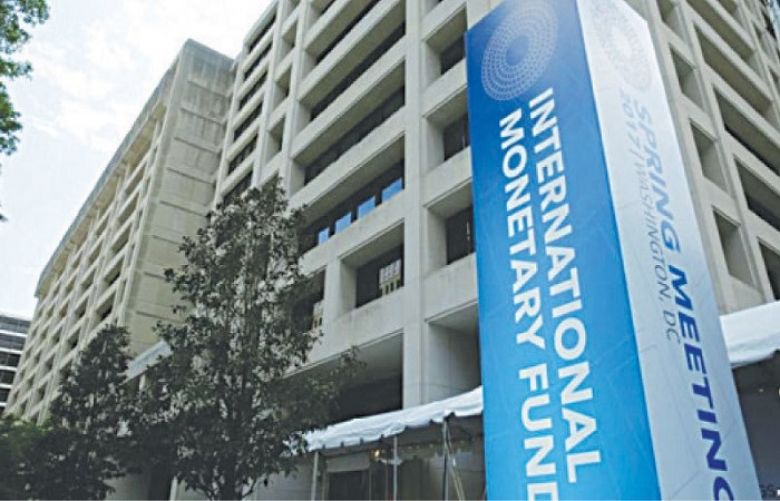The International Monetary Fund seeks a further limit on short-term borrowings for filling budget gaps, as Pakistan’s gross financing needs may remain close to 31% of the size of its economy in this fiscal year – which are higher than previous estimates.
Pakistan and the IMF have been finalising the details of the country’s financing plan for short to medium term as part of efforts to revive the stalled $6 billion bailout programme, said sources in the Ministry of Finance.
They said that the gross financing needs – the money that the country needs to finance the budget and honour international obligations – are estimated around Rs14 trillion or 30.7% of GDP in this fiscal year.
The figure is 1.5% of GDP or Rs700 billion higher than the estimates the IMF published in its April report after approval of $1.4 billion emergency funding.
A key reason behind higher financing needs is the anticipated shortfall in tax revenues and some expenditure slippages, the sources said.
In the last fiscal year, Pakistan’s total gross financing needs remained at 31.2% of GDP, as the country had to borrow more due to record shortfall in tax collection by the Federal Board of Revenue.
The agreement on all outstanding issues like FBR’s actual tax collection, subsidies and circular debt could pave the way for the approval of second review of the IMF programme.
The second review had to be approved in March but the government’s failure to bring a mini-budget and increase in electricity prices put the hardly eight months old programme on ice.
As per the financing details being discussed between the IMF and Pakistan, the monetary body seeks steep cut in the gross financing needs from fiscal year 2021-22, starting from July next year.
Sources said that the gross financing needs for the next fiscal year could be around 27% of GDP – up from April estimates of 24%. But still these were around 5% of GDP less than the requirements for this fiscal year.
They added the IMF was of the view that countries which had sustainable debt levels borrow in the range of 15% of the size of their economies every year – a ratio that is less than half of Pakistan’s current gross financing requirements.
The IMF is keen to improve this ratio but due to structural issues no major improvement is expected in short to medium term without a comprehensive reforms plan.
The total public debt that was 72.5% of GDP two years ago has mounted up to 87.2% of GDP by the end of last fiscal year.
Insiders said the IMF wanted that the debt to GDP ratio should be around 73% of GDP in the next four years.
In its April report, the international money lender had underlined that Pakistan’s debt sustainability was also dependent on rollover of maturing obligations by China, Saudi Arabia, and UAE. Saudi Arabia has already prematurely withdrawn $1 billion out of $3 billion.
The sources said that the IMF also wanted further limit on Ministry of Finance’s reliance on short-term borrowings through market treasury bills.
As of end June, the country borrowing through treasury bills stood at 12.2% of GDP.
The IMF wanted that Pakistan should cut it to around 7% of GDP.
There was a possibility that the IMF could agree to reduce share of treasury bills to 8.9% of GDP, which would increase the share of Pakistan Investment Bonds.
It has to been seen whether the investors would lend the money by purchasing long-term instruments, as in recent auctions, the investors did not purchase fixed-rated PIBs.
As of June 2020, the country’s domestic debt was Rs23.8 trillion and Rs5.6 trillion or 23.4% of domestic debt was on account of treasury bills.
The IMF’s insistence on reducing reliance on treasury bills is aimed at limiting refinancing risks.
One of the concerns of the IMF was that the government’s reliance on short-term borrowings could shake the confidence of the market.
But there will be a tradeoff between reducing refinancing risks and the cost of debt servicing, as the long-term loans carry relatively higher cost.
The Ministry of Finance is also planning to launch a new floating bond instrument, having quarterly interest rate payment as against the current biannual coupon rate.
The State Bank of Pakistan on Monday kept the interest rate unchanged at 7%, which provides an ideal situation to the finance ministry to borrow in the fixed-rated long term bonds.
The quarterly coupon-backed PIB would reduce the investors interest rate risk.
The SBP in its handout noted that during the first two months of this fiscal year, in line with the gradual pick-up in economic activity, tax revenues returned to positive growth, averaging around 1.2%.
This suggests that the chances of achieving Rs4.963 trillion tax collection target are remote, which requires about 23% growth rate.







